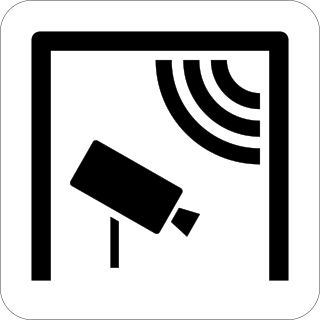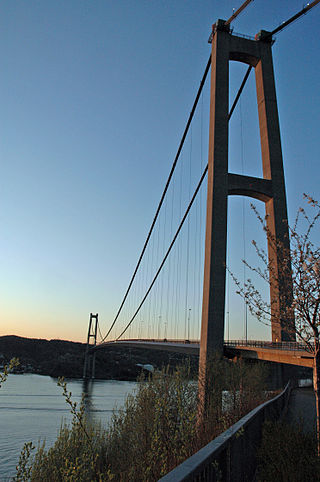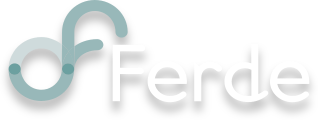
Transport in Denmark is developed and modern. The motorway network covers 1,111 km while the railway network totals 2,667 km of operational track. The Great Belt Fixed Link connecting the islands of Zealand and Funen and the New Little Belt Bridge connecting Funen and Jutland greatly improved the traffic flow across the country on both motorways and rail. The two largest airports of Copenhagen and Billund provide a variety of domestic and international connections, while ferries provide services to the Faroe Islands, Greenland, Iceland, Germany, Sweden, and Norway, as well as domestic routes servicing most Danish islands.

The Great Belt Bridge or Great Belt fixed link is a multi-element fixed link crossing the Great Belt strait between the Danish islands of Zealand and Funen. It consists of a road suspension bridge and a railway tunnel between Zealand and the small island Sprogø in the middle of the Great Belt, and a box-girder bridge for both road and rail traffic between Sprogø and Funen. The total length is 18 kilometres (11 mi).

Transport in Norway is highly influenced by Norway's low population density, narrow shape and long coastline. Norway has old water transport traditions, but road, rail and air transport have increased in importance during the 20th century. Due to the low population density, public transport is somewhat less built out in rural areas of Norway, however public transport in, and around cities is well developed.

The Øresund or Öresund Bridge is a combined railway and motorway bridge across the Øresund strait between Denmark and Sweden. It is the longest in Europe with both roadway and railway combined in a single structure, running nearly 8 kilometres from the Swedish coast to the artificial island Peberholm in the middle of the strait. The crossing is completed by the 4-kilometre (2.5 mi) Drogden Tunnel from Peberholm to the Danish island of Amager.

Copenhagen Airport, Kastrup is an international airport serving Copenhagen, Denmark, Zealand, the Øresund Region, and southern Sweden including Scania. It is the largest airport in the Nordic countries.

Electronic toll collection (ETC) is a wireless system to automatically collect the usage fee or toll charged to vehicles using toll roads, HOV lanes, toll bridges, and toll tunnels. It is a faster alternative which is replacing toll booths, where vehicles must stop and the driver manually pays the toll with cash or a card. In most systems, vehicles using the system are equipped with an automated radio transponder device. When the vehicle passes a roadside toll reader device, a radio signal from the reader triggers the transponder, which transmits back an identifying number which registers the vehicle's use of the road, and an electronic payment system charges the user the toll.

European route E20 is a part of the United Nations International E-road network. It runs roughly west–east through Ireland, the United Kingdom, Denmark, Sweden, Estonia, and Russia.

Autopass is an electronic toll collection system used in Norway. It allows collecting road tolls automatically from cars. It uses electronic radio transmitters and receivers operating at 5.8 GHz (MD5885) originally supplied by the Norwegian companies Q-Free and Fenrits. Since 2013 Kapsch and Norbit supplied the transponders. In 2016 the Norwegian Public Roads Administration revealed that they had chosen Norbit and Q-Free as suppliers of Autopass-transponders the next four years.

Open road tolling (ORT), also called all-electronic tolling, cashless tolling, or free-flow tolling, is the collection of tolls on toll roads without the use of toll booths. An electronic toll collection system is usually used instead. The major advantage to ORT is that users are able to drive through the toll plaza at highway speeds without having to slow down to pay the toll. In some installations, ORT may also reduce congestion at the plazas by allowing more vehicles per hour/per lane.

The Askøy Bridge is a suspension bridge that crosses the Byfjorden between the municipalities of Bergen and Askøy in Vestland county, Norway. It is 1,057 meters (3,468 ft) long and has a main span of 850 meters (2,789 ft). Its span was the longest for any suspension bridge in Norway, until the Hardanger Bridge was opened in August 2013. Now the bridge is the third longest in Norway. It carries two lanes of County Road 562 and a combined pedestrian and bicycle path. The bridge's two concrete pylons are 152 meters (499 ft) tall and are located at Brøstadneset in Bergen municipality and Storeklubben in Askøy municipality. The bridge has seven spans in total, although all but the main span are concrete viaducts. The bridge has a clearance below of 62 meters (203 ft).
A toll road is a road over which users may travel over on payment of a toll, or fee. Tolls are a form of use tax that pays for the cost of road construction and maintenance, without raising taxes on non-users. Investor's bonds necessary for the construction of the roads are issued and sold with the expectation that the bonds will be paid back with user tolls. The toll roads may be run by government agencies that have bond issuing authority and/or private companies that sell bonds or have other sources of finance. Toll roads are usually a government guaranteed road monopoly that guarantees limited or no competing roads will be built by government agencies for the duration of the bonds. Private toll roads built with money raised from private investors in expectation of making money from the tolls probably dominated early toll roads. Government sponsored toll roads often guarantee a minimum payment to the bond holders if traffic volume and toll collections are less than predicted. If the toll authority is a private company there is often a maximum amount of fees that they may extract from users. Toll road operators are typically responsible for maintaining the roads. After the bonds are paid off the road typically reverts to the government agency that authorized the road and owns the land it was built on. Like most government taxes it is not unusual for tolls to continue to be charged after the bonds have been paid off.
Fjellinjen AS is a toll company owned by the City of Oslo (60%) and Viken County Municipality (40%). It is responsible for the collection from the toll ring around Oslo, with a total of nineteen toll plazas. All toll roads in Norway have a toll road operator responsible for the financing of the road project. The right to demand payment of toll charges is granted when a toll charge agreement is entered into with the Norwegian Public Roads Administration.

The Flakk–Rørvik Ferry is an automobile ferry in Trøndelag county, Norway. The line is part of Norwegian County Road 715, which connects the Fosen peninsula with the city of Trondheim. The crossing of Trondheimsfjord is performed with the two - three double-ended ferries; MF Lagatun, MF Munken, which are Hybrid Electric, and MF Trondheim and operated by FosenNamsosSjø, contracted by the Public Transport Operator of Trøndelag, AtB. The Crossing takes 25 Minutes, and has a length of 7,4 Km.

Ferde AS is a Norwegian toll company owned by Agder, Rogaland and Vestland counties. The company was created on 5 October 2016 is headquartered in Bergen. The company was called Sørvest Bomvegselskap AS until 1 January 2018. All toll roads in Norway have a toll road operator responsible for the financing of the road project. The right to demand payment of toll charges is granted when a toll charge agreement is entered into with the Norwegian Public Roads Administration.

BroBizz is an electronic toll collection system run by the company BroBizz A/S. It originated in Denmark and was established in 2008. The system operates using a wireless transmitter, enabling drivers to pass through tollbooths without stopping. It has been implemented on frequented traffic links such as the Great Belt Fixed Link and the Øresund Bridge. Additionally, BroBizz is accepted for payment on various ferries, toll roads, airport car parks, and parking facilities across multiple Scandinavian cities.

Road tolling to finance bridges, tunnels and roads has a long history in Norway. The cities Oslo, Bergen and Trondheim introduced toll rings between 1986 and 1991 as a means to discourage urban traffic and to finance infrastructure projects around those cities. Today toll rings circumscribe Oslo, Kristiansand, Stavanger, Haugesund, Bergen, Askøy, Bodø, Harstad, Grenland, Førde and Trondheim. Besides toll rings, road tolls are installed to finance certain road projects, and often also on the existing road to discourage people from using it. Some tolls use congestion pricing and/or environmentally differentiated toll rates.

Vegfinans AS is a Norwegian toll company owned by the counties Innlandet, Vestfold og Telemark and Viken. The company was created on 14 February 2001 and is headquartered in Drammen. All toll roads in Norway have a toll road operator responsible for the financing of the road project. The right to demand payment of toll charges is granted when a toll charge agreement is entered into with the Norwegian Public Roads Administration.
Vegamot AS is a Norwegian toll company owned by Trøndelag and Møre og Romsdal counties. The company was created in 1983 and is headquartered in Trondheim. All toll roads in Norway have a toll road operator responsible for the financing of the road project. The right to demand payment of toll charges is granted when a toll charge agreement is entered into with the Norwegian Public Roads Administration.

Bompengeselskap Nord AS is a Norwegian toll company owned by Nordland and Troms og Finnmark counties. The company was created 17 August 2016 and is headquartered in Narvik. All toll roads in Norway have a toll road operator responsible for the financing of the road project. The right to demand payment of toll charges is granted when a toll charge agreement is entered into with the Norwegian Public Roads Administration.


















